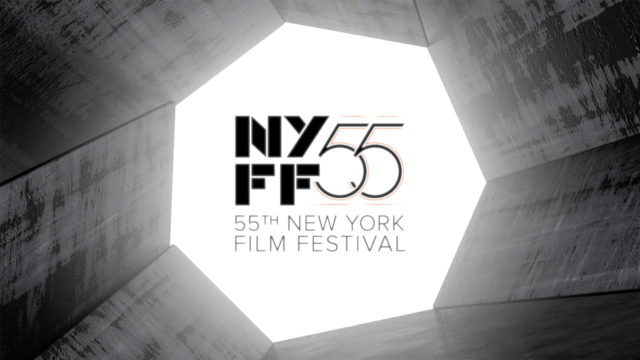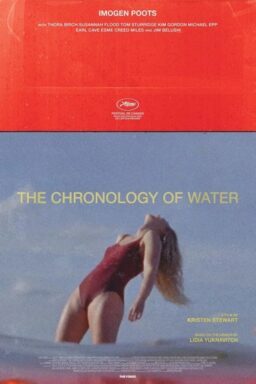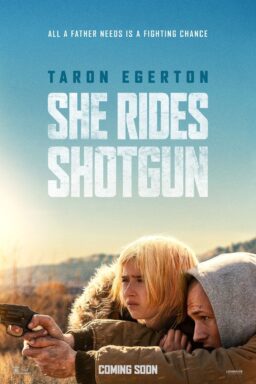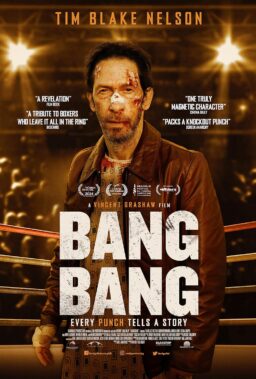The 2017 New York Film Festival sees the Lincoln Center event reaching the venerable age of 55. It’s also the fifth year under the guidance of Kent Jones, who is only the festival’s third director, having succeeded Richard Roud and Richard Pena, each of whom served 25-year terms. Five years is, I think, an appropriate place to pause and reflect on how the festival has fared under its new leadership, and while my appraisal here will relate certain disappointments in the recent programming, let me start by focusing on reasons the festival remains so important to me.
On Thursday morning, Sept. 21, I walked into the Walter Reade Theater for the first of the day’s press screenings. I knew practically nothing of the film, “The Rider,” except that it was an American indie that had debuted at Cannes. But from the film’s first images on, I was entranced and intoxicated, and I emerged from the theater 104 minutes later convinced that I had seen one of the most astonishing achievements of recent cinema, a poetic vision of the American West made, amazingly enough, by a young Chinese female filmmaker, Chloe Zhao.
Shot on the Pine Ridge reservation in South Dakota, the film concerns a young rodeo rider named Brady, who, the first time we see him, is pulling surgical staples out of his shaved head. Having recently suffered a bad injury in a fall, Brady is struggling to get his life back, and it’s a fight that will pose certain tough existential questions: does he have it in him to overcome the physical challenges he faces, and is life worth living if he can’t? He gets sympathy in his quest from his mentally disabled younger sister and his hard-drinking dad, but they can’t offer any more help than his best friend, who has been permanently crippled by a rodeo fall.
All of the characters just mentioned are played by non-actors whose lives they reflect, and the performances are natural and beautifully honed in a way that recalls the Italian neo-realists as well as Iranian directors who followed their lead and recent American directors such as Ramin Bahrani and Jim McKay. Reviewing Zhao’s first feature, “Songs My Brother Taught Me,” I said her poetic way with landscapes and inward narratives reminded me of Terrence Malick, and while that comparison still holds, this new film is a quantum leap beyond the earlier one. Its visual lyricism is perfectly controlled and cumulatively ravishing.

“The Rider,” in short, is the kind of dazzling surprise I’ve been able to count on as a regular occurrence in my 38 years covering the NYFF. And that dependability has changed very little from year to year and festival director to festival director. Typically, half of the films on my annual ten-best list have played the festival. Considering that the NYFF’s Main Slate contains only 30 or so films, that record has always struck me as rather phenomenal.
Of course, that’s not to suggest that any edition is seamlessly brilliant. I’d wager that most frequent festival-goers would agree that the Main Slate’s offerings always break down into three or so categories. Most valuable are those international (and some American) titles that critics worldwide will consider the year’s best films, most having debuted at Cannes or other festivals. A second group is a mixed bag of lesser works or interesting curiosities that often won’t be seen beyond the festival circuit. And finally, there are usually a couple of clunkers that make you go, “What were they thinking when they picked that dog?”
As I say, the consistency of these categories has remained pretty steady over the years, no matter who was in charge. Yet the two previous eras had distinctive identities nonetheless. Beginning in 1963 under the looming influence of the French New Wave, Roud’s festival was auteur-driven and unapologetically Euro-centric, and why not: his tenure spanned the last great era of European auteurs, from Bergman and Godard to Fassbinder and Almodovar. Pena continued the auteur emphasis but purposefully broadened the geo-cultural scope, bringing in cinemas as far-flung as Taiwan, Burkina Faso, Iran, Mexico, Egypt and Turkey; it was a festival that cultivated attention to the evolution of national cinemas globally.
Not only has Jones’ festival not produced an equivalent identity of its own, it seems to me to represent a backsliding from the focus, flux and dynamism of Pena’s era at its peak. The two previous eras both had a kind of vision behind them that the current one has yet to exhibit. And the weaknesses I see currently are not a matter of individual films chosen or not chosen—choices that can be debated endlessly, and pointlessly—but rather of unfortunate patterns in the programming that are only evident over time, and that I think owe largely to a change in the festival’s selection process that began with the new regime.

A little history. Beginning in 1966, not long after Roud and Amos Vogel founded the NYFF, its programming was decided by a method that proved very durable and, I would say, successful. The selection committee, which usually attended Cannes as a group, consisted of the festival director, another staff member of the Film Society of Lincoln Center, and three outside critics, who usually served terms of three years. Over the years those critics included the likes of Dave Kehr of the Daily News, David Sterritt of the Christian Science Monitor, J. Hoberman and Melissa Anderson of the Village Voice, David Ansen of Newsweek, Todd McCarthy of Variety, Lisa Schwarzbaum of Entertainment Weekly, David Denby of New York magazine, Richard Corliss of Time, Stuart Klawans of The Nation, and others—all very reputable writers.
Then, starting with Jones’ tenure, the outside voices were dispensed with and the festival’s programming became an in-house affair. No announcement or explanation for it was proffered. It simply happened. Since then, the selection committee has consisted of Jones and other folks who are either employees or affiliated with the Film Society. It seems term limits for committee members have also gone out the window. Presumably, all current members are either serving for life, or at Jones’ discretion.
Anyone who’s ever worked for a company or large organization will understand what I mean when I say the previous set-up of the selection process seems destined to produce stronger, more interestingly varied results than the new one. If you have a decision-making group that’s regularly refreshed by the perspectives of smart, engaged outsiders, it’s far less likely to fall into clique-like thinking and unexamined assumptions and built-in biases. In the current set-up, too, there’s the factor that everyone on the committee depends on the Film Society for all or part of their income, a situation where “go along to get along” can be a strong if unspoken motivator. In saying this, I don’t mean to question the qualifications or judgment of the individuals on the current selection committee; indeed, I respect all of them. What I’m talking about is how group dynamics in certain situations, and over time, can produce results that are less than stellar, sometimes even to the point of being rather bizarre.
Among the results this year that merit that description, consider that the festival found no place for “24 Frames,” the last film by Abbas Kiarostami. The feature, which I’ve seen, debuted at Cannes, where it got great reviews (“A stunning and magnificent Kiarostami statement on love, cinema, death, love, technology, censorship, and the 21st century,” said Variety). Kiarostami, almost any critic would agree, was one of the world’s great auteurs, and he had a long relationship with the NYFF. Before the festival introduced his “And Life Goes On” in 1992, probably few if any American critics had heard his name; at the end of the ‘90s, U.S. critics polled by Film Comment (a Film Society publication) named him the decade’s most important director. That renown surely had a lot to do with the NYFF, which played all of his major features through “Like Someone in Love” in 2012. Yet the festival’s current programmers couldn’t accommodate Kiarostami’s final masterpiece?
Whenever Jones and other committee members are asked to explain or defend their choices in interviews, they have a standard response (which is getting a little tired by now). It goes like this: “What’s in the festival simply reflects our tastes. We’re not trying to follow any formula or agenda. We simply choose the best films we see.” All of which sounds perfectly reasonable.
But in a case like the Kiarostami omission, one is compelled to respond: A) “Maybe you need to consider that the group’s tastes are defective and should be examined. I can’t imagine that many critics, like those named above, would agree that Kiarostami’s film should be excluded. So, is the real problem the lack of outside voices on the committee?” And B) “Should our tastes be the sole deciding criterion, the flat assertion that ends all argument? Might not the committee factor in, say, our traditions, i.e. Kiarostami’s long and important history with the NYFF? Kiarostami was a beloved figure who built a large following via the festival. Wouldn’t his final film be not only a guaranteed sell-out but a chance for his many admirers in the NYFF community to pay homage to his work?” (Many other cities and festivals had public Kiarostami memorials following his death. New York has had none.)
Still, bizarre as it was, excluding Kiarostami was only one decision—it could have been a very temporary case of group insanity—and I said that I was mostly concerned about patterns, so let’s move on to this: there has not been an Iranian film in the festival’s Main Slate since Jones took over. That’s beyond baffling on a couple of fronts. First, the festival was instrumental in introducing Iranian cinema to New York audiences and for many years was a dependable showcase for its new works. Second, in the last five years, certain top Iranian auteurs have won major prizes for films that would formerly have been automatic inclusions in the NYFF. Jafar Panahi’s “Taxi” won the Golden Bear in Berlin and acclaim around the world; since he’s under house arrest by the regime in Tehran, the film’s rejection by Panahi’s former champions at the NYFF was like kicking a great auteur while he’s down.
Then there’s the case of Asghar Farhadi. “The Past,” his follow-up to the Oscar-winning “A Separation,” won a major prize at Cannes, and the Oscar win for his next film, “The Salesman,” made him only the fourth director in history (following Bergman, Fellini and De Sica) to win the Best Foreign-Language Film trophy twice. Does Farhadi need the NYFF? Obviously not. I would say the festival needs him and his caliber of artist more. But it rejected his last two celebrated prize-winners.
I use Iranian cinema as my prime example here because it’s an area of specialty for me. I could choose various other examples (next up would be Russian cinema and especially the work of director Andrey Zvyagintsev) but you get the point. Do I think Jones dislikes Kiarostami or has a beef against Iranian cinema as a whole? In fact, I have every reason to believe neither thing is true. So, what gives? Is he just trying to put a lot of distance between Richard Pena’s festival and his own? Possibly. But my hunch is that this really is a case of bad group decision-making by folks whose closeness to each other—and lack of outside input—is making their process increasingly insular and parochial.
Parochial certainly compared to the last regime. What’s really a shame here is that Pena’s festival was vital and valuable in the coherent and varied picture of global cinema it presented. The current festival has lost a lot of that coherence while offering little in its place. The world’s cinema map seems to have grown less interesting and diverse in the last five years. The festival offers fewer and fewer premieres and discoveries. It predictably serves up the trendiest of Cannes hits along with the usual parade of French mediocrities. And then there’s the truly worthless. My choice for the most awful film I’ve seen in the festival’s press screenings, Agnieszka Holland’s “Spoor,” is a bizarre, semi-coherent tale of ecological activism in Poland. A friend called it “ridiculous rubbish,” a sentiment that accorded with the grumblings I heard from others.
Finally, my dissatisfaction with some elements of the NYFF in recent history doesn’t in the least make me pessimistic about its future. Kent Jones is a very smart guy who in many ways is the ideal successor to Richards Roud and Pena. And improving what I think ails the festival might be accomplished fairly readily by a single remedy: returning to the practice of using outside critics on the selection committee.
In any case, I owe Jones and the gang for “The Rider.”

Another noteworthy facet of this year’s festival concerns the Main Slate’s three prime slots: Opening Night, Centerpiece and Closing Night. In past years these featured premieres, which have been getting fewer and fewer in the Main Slate. This year, only the first (Richard Linklater’s “Last Flag Flying”) and the last (Woody Allen’s “Wonder Wheel”) are premieres. The Centerpiece is Todd Haynes’ “Wonderstruck,” which received mixed reviews when it opened at Cannes.
The other thing that connects the three films is that they all issue from Amazon Studios. At Cannes this year there was a certain amount of pushback, especially among Europeans, against the growing power of Internet behemoths Amazon and Netflix. The former’s movie division is currently run by Ted Hope, a former head of the New York production house Good Machine. As others have noted, Hope seems to be recreating ‘90s-style independent auteur cinema at Amazon, which of course has much vaster resources than the Good Machines of yore. Whether Amazon’s having the three main slots at the NYFF will occasion any pushback or questioning in New York remains to be seen. It’s certainly a first.
Hope’s position at Amazon has resulted in some fine films and promises more. I wish I could say I thought Richard Linklater’s latest was one of the shining examples of what can be done at an intelligently run studio like Amazon. In fact, saying otherwise pains me considerably. I’m a big fan of Linklater’s work, including “Slacker,” “Waking Life,” “School of Rock,” “Tape” and “Before Sunset.” I think in many ways he is the best American filmmaker of his generation.
The problems I have with “Last Flag Flying” stem from its script, which was adapted by Linklater and Darryl Ponicsan from a novel by the latter. Ponicsan previously wrote “The Last Detail” and this tale issues from the same template: it also concerns a bunch of military guys on a road trip. Now the Iraq War is on and Steve Carell is an aggrieved dad who gets his Vietnam vet pals (played by Bryan Cranston and Laurence Fishburne) to help him escort his dead soldier son to his burial, a journey that takes them from Maryland to New York to a chilly New Hampshire cemetery.
While the film has no shortage of Linklater’s usual filmmaking smarts, the characters are clichés, the story plodding and predictable, and the military/male-bonding element full of the wrong kind of easy sentimentality. Perhaps it was unfortunate that I encountered the film in the same week that I watched Ken Burns and Lynn Novick’s magisterial “The Vietnam War,” which returns us to the infuriating reality that many Americans and millions of Vietnamese died because U.S. politicians lied constantly and got away with it because too many citizens gullibly swallowed the lies. “Last Flag Flying” also deals with truth and lies in wartime, but settles for a pat fiction that swings toward an embrace of comforting stories, true or not. Not what I wanted to hear.












